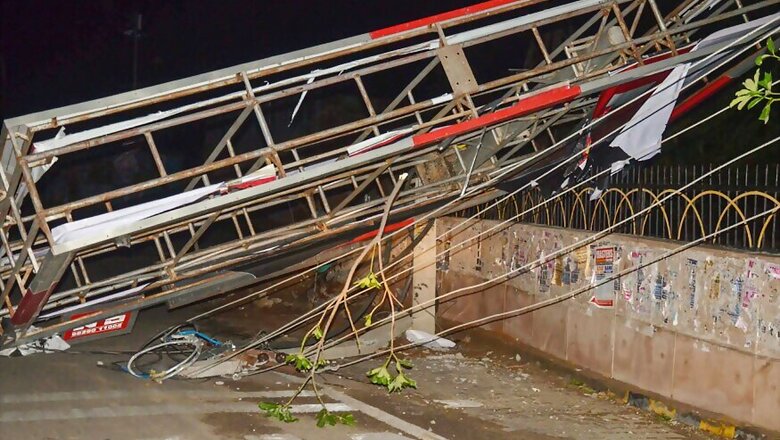
views
New Delhi: A cyclonic circulation over Haryana was the trigger for the deadly dust storm that swept parts of Rajasthan and Uttar Pradesh, weather experts said on Thursday, estimating that the wind speed during the storm may have gone up to 100 kilometres per hour.
The winds were so violent that a number of houses collapsed and electricity poles and trees got uprooted, as the severe dust storm swept parts of these states.
The phenomenon was restricted to these two states, largely because of external and domestic reasons, experts said.
There were primarily four reasons that lead to the thunderstorm -- excessive heating, availability of moisture, instability in atmosphere and a trigger for the storm, India Meteorological Department (IMD) Additional Director General Mritunjay Mohapatra said.
"The north Indian plains have been witnessing temperatures of over 40 degree Celsius. There were two sources of moisture --a western disturbance over north Pakistan and adjoining Jammu and Kashmir and easterly winds from the Bay of Bengal," Mohaptara said.
The cold winds from the western disturbance was making atmosphere unstable.
"The trigger was a cyclonic circulation over Haryana," Mohapatra said.
This led to the formation of two cloud patches, said Mahesh Palawat, Vice President (Meteorology and Climate Change) of Skymet, a private firm that provides weather forecast
One patch moved to north of Delhi, while another patch moved over the Alwar, Agra, and Dholpur belt, which was more deadly.
Mohapatra said it was difficult to record the wind speed as the phenomenon was restricted to only small patches. In Delhi, where a milder version of the dust storm and thunderstorm struck, the wind speed was recorded as 69 kmph.
However, Palawat estimated that the wind speed would have been more than 100 kmph.
Laxman Singh Rathore, former Director General of the IMD, said wind speed is normally around 50 kmph in a thunderstorm.
"In case of a dust storm, due to excessive heating, the water from the clouds evaporates before it could land. So soil is dry and the severe winds lift up this soil up to 500 metres above the land.
"The wind speed can rise up to 100 kmph and in some case it can reach 130 kmph making conditions severe," Rathore, who is also a member of the National Disaster Managment Authority, said.














Comments
0 comment